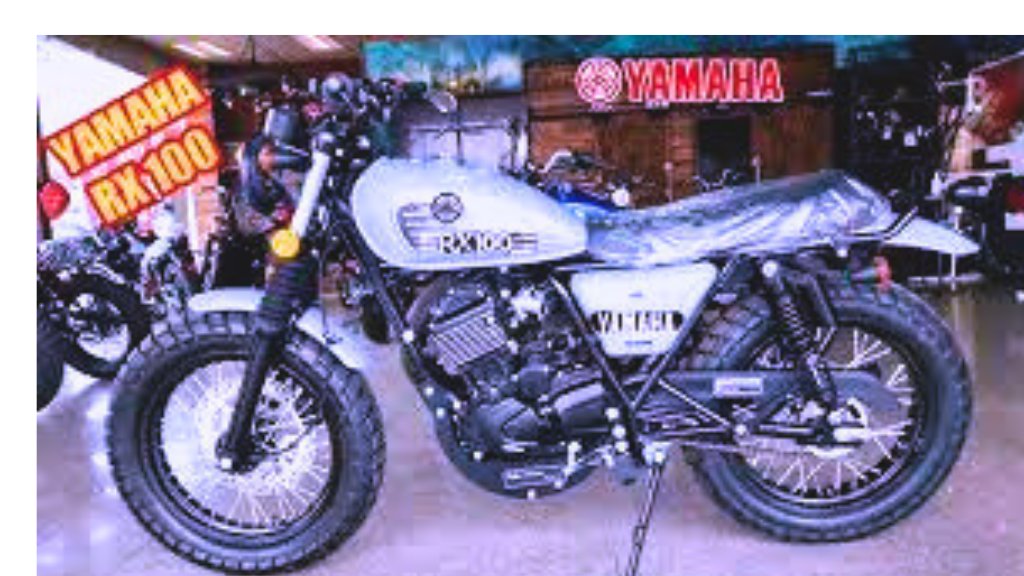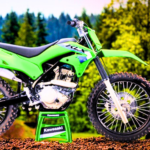Yamaha RX 100cc Bike
The Yamaha RX 100cc bike stands as more than just a motorcycle; it’s a symbol of the golden era of biking in India. First launched in the 1980s, the yamaha rx 100cc bike quickly became a favorite among motorcycle enthusiasts, thanks to its blend of robust performance, striking design, and youthful spirit.
Although production ceased in the late 90s, the RX 100’s legacy remains alive, still cherished by biking communities.
In this article, we delve into the history, features, and enduring appeal of the Yamaha RX 100cc bike, a true icon in the motorcycle world.
The Story Behind the Yamaha RX 100
The Yamaha RX 100 was introduced in 1985, revolutionizing the Indian motorcycle scene. At a time when most motorcycles were designed mainly for utility, Yamaha recognized the demand for a bike that offered both performance and flair.
The RX 100 was engineered to deliver an exciting ride with a distinctive design, aimed at a younger, more dynamic audience.
This 100cc, two-stroke bike quickly became a hit, particularly among riders in India. Its attractive look and powerful performance made it one of the best-selling bikes of the era. While Yamaha eventually stopped manufacturing the RX 100 in 1996, it still enjoys a loyal following and is considered a classic by collectors and enthusiasts alike.
Design and Aesthetics: Unmistakably Stylish Yamaha RX 100
What set the Yamaha RX 100 apart was its aggressive and sporty design. At a time when most bikes were designed with practicality in mind, the RX 100 made a bold statement with its striking aesthetics. Its sharp lines, compact frame, and attention-grabbing features made it a visual delight.
The bike featured a low-profile fuel tank, angular bodywork, and a sleek headlamp, which gave it a contemporary look. Its rear fender was prominent, and the overall design conveyed a sense of speed and agility. Available in colors like black, red, and silver, the RX 100 had an unmistakable appeal that turned heads wherever it went.
Ergonomically designed handlebars and foot pegs ensured the bike wasn’t just eye-catching but also comfortable to ride, even for extended periods.
Yamaha RX 100 Powerful Engine and Performance
The Yamaha RX 100cc bike was powered by a 100cc, air-cooled, two-stroke engine, known for its remarkable power output and quick acceleration. Delivering 11 bhp at 7,500 rpm, this bike was a performance powerhouse for its time.
The RX 100’s engine allowed it to reach speeds of up to 100 km/h, providing an exhilarating riding experience. Its lightweight frame (weighing around 98 kg) ensured great agility, making it a favorite among riders who craved speed and nimbleness.
In terms of fuel efficiency, the RX 100 averaged a mileage of 40-45 km/l, a good balance between performance and economy. For riders looking for both thrills and value, the RX 100 was a perfect choice.
Handling and Comfort: A Rider’s Dream Yamaha RX 100
Despite its performance-oriented design, the Yamaha RX 100 also prioritized handling and comfort. Its lightweight frame made maneuvering through city traffic or winding roads a breeze, and its responsive suspension system offered a smooth ride even on rough surfaces.
The front of the bike was equipped with telescopic forks, while the rear featured twin shock absorbers, ensuring excellent stability. Whether navigating through dense urban areas or cruising on highways, the RX 100 provided a comfortable and enjoyable riding experience.
The bike’s acceleration was another key highlight. With quick throttle response, the RX 100 was ready to deliver power whenever needed. The distinctive sound of its two-stroke engine added to the thrill, making each ride feel unique.
Innovative Features Ahead of Its Time Yamaha RX 100
Although the Yamaha RX 100 lacked the advanced features found in today’s bikes, it was ahead of its time in many respects. The bike’s five-speed manual gearbox offered smooth gear transitions, ensuring the bike performed optimally under various conditions.
One of the RX 100’s standout qualities was its simplicity. The bike’s two-stroke engine, while requiring regular oil mixing, was relatively low-maintenance and easy to repair. Additionally, its oil-mixed lubrication system reduced the need for separate oil changes, streamlining upkeep.
The braking system included a front disc brake and a rear drum brake, which, while not as advanced as modern systems, provided reliable stopping power, making the RX 100 safe to ride even at high speeds.
Maintenance and Durability: Built to Endure
The Yamaha RX 100 is well-regarded for its durability. Its sturdy construction allowed it to handle the rough Indian roads, and its two-stroke engine, known for its resilience, required minimal maintenance.
Yamaha’s extensive service network in India made it easy for owners to find spare parts and get their bikes serviced at authorized centers. Over time, the RX 100 built a reputation for being a low-maintenance bike that could endure, making it a top choice for riders seeking a dependable companion.
Many RX 100 owners have restored their bikes, and the availability of spare parts ensures that these bikes continue to run smoothly. The bike’s robust design and reliability keep it relevant even in today’s market, with used models still popular among collectors.
The RX 100 Today: A Vintage Collector’s Item
Although production of the Yamaha RX 100 ended nearly three decades ago, the bike’s iconic status endures. Today, it is considered a collectible, with many enthusiasts seeking out well-maintained models. Restored RX 100 bikes are particularly sought after, as they are seen as a part of motorcycling history.
The RX 100 remains a nostalgic symbol of performance, simplicity, and youth. Its influence continues to inspire new generations of riders, whether they are restoring the bike or simply admiring its design and legacy at vintage bike exhibitions.
Key Specifications: Yamaha RX 100
| Feature | Specification |
|---|---|
| Engine Type | Air-cooled, 2-stroke |
| Engine Displacement | 98cc |
| Power Output | 11 bhp @ 7,500 rpm |
| Top Speed | 100 km/h |
| Mileage | 40-45 km/l |
| Weight | 98 kg |
| Transmission | 5-speed manual |
| Brakes | Front: Disc, Rear: Drum |
| Suspension | Front: Telescopic, Rear: Twin Shock Absorbers |
FAQ: Frequently Asked Questions about the Yamaha RX 100
Q1: Why was the Yamaha RX 100 discontinued?
The RX 100 was discontinued in 1996 due to increasingly strict emission regulations in India. Its two-stroke engine was not compliant with these new standards, which led Yamaha to focus on more eco-friendly, four-stroke models.
Q2: What makes the Yamaha RX 100 stand out?
The RX 100 is celebrated for its combination of performance, sleek design, and reliability. Its powerful engine, lightweight build, and smooth handling made it a favorite among young riders.
Q3: Is the Yamaha RX 100 suitable for beginners?
While the RX 100 offers impressive performance, its manual transmission and two-stroke engine may be challenging for total beginners. However, it’s an exciting bike for those with some prior riding experience.
Q4: How should I maintain my Yamaha RX 100?
Regular maintenance includes checking the engine oil, ensuring the gearbox and fuel system are functioning well, and monitoring the suspension and brakes. Periodic oil mixing is essential for the two-stroke engine.
Q5: Are parts for the Yamaha RX 100 still available?
Yes, many parts for the RX 100 are still available through Yamaha’s service network and second-hand markets. Vintage motorcycle enthusiasts often restore the RX 100, ensuring that it remains operational even decades after its production.
Conclusion: A Timeless Legacy
The Yamaha RX 100cc bike was more than just a motorcycle; it symbolized a shift in Indian motorcycling culture. With its blend of power, style, and reliability, the RX 100 captured the hearts of riders in the 80s and 90s. Though the motorcycle market has evolved, the RX 100 remains an iconic figure in biking history.
For those fortunate enough to experience it, the RX 100 will always be a memorable and thrilling ride, carrying with it the essence of an era gone by.







